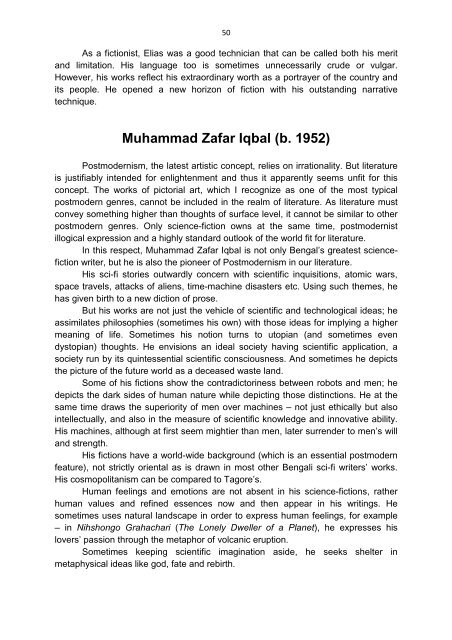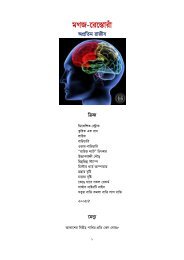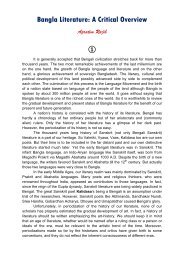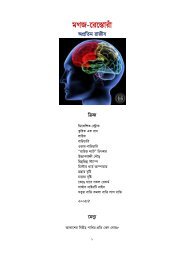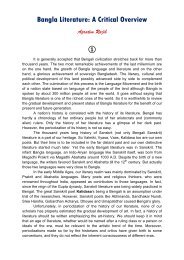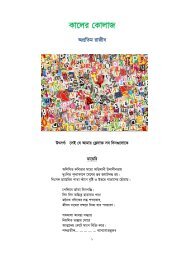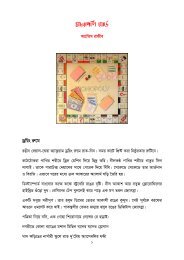BLiterature-Apratim
Create successful ePaper yourself
Turn your PDF publications into a flip-book with our unique Google optimized e-Paper software.
50<br />
As a fictionist, Elias was a good technician that can be called both his merit<br />
and limitation. His language too is sometimes unnecessarily crude or vulgar.<br />
However, his works reflect his extraordinary worth as a portrayer of the country and<br />
its people. He opened a new horizon of fiction with his outstanding narrative<br />
technique.<br />
Muhammad Zafar Iqbal (b. 1952)<br />
Postmodernism, the latest artistic concept, relies on irrationality. But literature<br />
is justifiably intended for enlightenment and thus it apparently seems unfit for this<br />
concept. The works of pictorial art, which I recognize as one of the most typical<br />
postmodern genres, cannot be included in the realm of literature. As literature must<br />
convey something higher than thoughts of surface level, it cannot be similar to other<br />
postmodern genres. Only science-fiction owns at the same time, postmodernist<br />
illogical expression and a highly standard outlook of the world fit for literature.<br />
In this respect, Muhammad Zafar Iqbal is not only Bengal’s greatest sciencefiction<br />
writer, but he is also the pioneer of Postmodernism in our literature.<br />
His sci-fi stories outwardly concern with scientific inquisitions, atomic wars,<br />
space travels, attacks of aliens, time-machine disasters etc. Using such themes, he<br />
has given birth to a new diction of prose.<br />
But his works are not just the vehicle of scientific and technological ideas; he<br />
assimilates philosophies (sometimes his own) with those ideas for implying a higher<br />
meaning of life. Sometimes his notion turns to utopian (and sometimes even<br />
dystopian) thoughts. He envisions an ideal society having scientific application, a<br />
society run by its quintessential scientific consciousness. And sometimes he depicts<br />
the picture of the future world as a deceased waste land.<br />
Some of his fictions show the contradictoriness between robots and men; he<br />
depicts the dark sides of human nature while depicting those distinctions. He at the<br />
same time draws the superiority of men over machines – not just ethically but also<br />
intellectually, and also in the measure of scientific knowledge and innovative ability.<br />
His machines, although at first seem mightier than men, later surrender to men’s will<br />
and strength.<br />
His fictions have a world-wide background (which is an essential postmodern<br />
feature), not strictly oriental as is drawn in most other Bengali sci-fi writers’ works.<br />
His cosmopolitanism can be compared to Tagore’s.<br />
Human feelings and emotions are not absent in his science-fictions, rather<br />
human values and refined essences now and then appear in his writings. He<br />
sometimes uses natural landscape in order to express human feelings, for example<br />
– in Nihshongo Grahachari (The Lonely Dweller of a Planet), he expresses his<br />
lovers’ passion through the metaphor of volcanic eruption.<br />
Sometimes keeping scientific imagination aside, he seeks shelter in<br />
metaphysical ideas like god, fate and rebirth.


